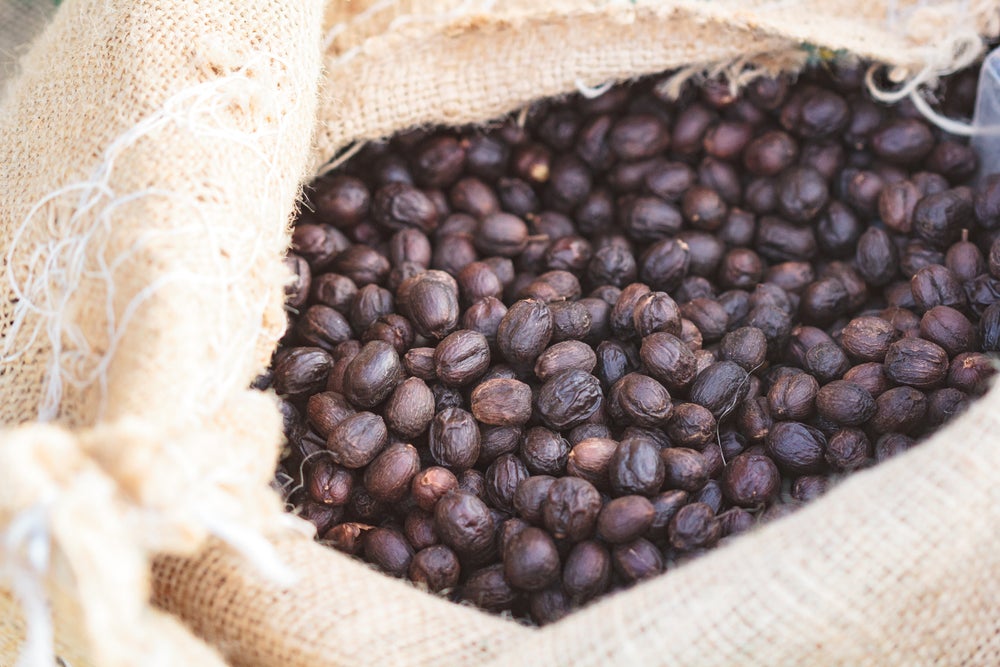About This Coffee
Diamond is a true jewel of a coffee. Expertly blended to present an impressively consistent cup profile from year to year and sourced from a variety of farms in Minas Gerais, Brazil, this coffee is a great addition to any drip or espresso blends.
Our Diamond supply chain is now IMPACT verified. IMPACT provides assurance that coffees are produced in environmentally and socially sustainable ways. IMPACT verified coffees are deforestation-free and contribute to the wellbeing of workers.
Diamond is a well-balanced coffee that appeals to a wide range of palates. The result is a profile of a neutral and smooth coffee that will provide a solid base for other flavors in the blend to stand on. Diamond is NY2, which refers to the number of defects allowed in the green beans. Our partners employ strict sorting standards that ensure that few-to-zero defects remain by the time the beans reach our customers.
Brazil Harvest & Post-Harvest
Most Brazilian coffee is grown on huge farms, built and equipped for mechanical harvesting and processing that are designed to maximize productivity. The relatively flat landscape across many of Brazil’s coffee regions combined with high minimum wages has led most farms to opt for this type of mechanical harvesting over selective hand-picking.
In the past, this mechanization meant that strip-picking was the norm. However, today’s mechanical harvesters are increasingly sensitive, meaning that farms can selectively harvest only fully ripe cherries at each pass. This is great news for specialty-oriented producers.
In many cases and on less level sections of farms, a mixed form of ‘manual mechanized’ harvesting may be used. The derricadeira – a sort of mechanized rake that uses vibration to harvest ripe cherry - can be used to selectively pick ripe cherry more quickly and cost-effectively than individual hand pickers. A tarp is spanned between coffee trees to capture the cherry as it falls.
With the aid of these newer, more selective technologies, there’s a growing number of farms that are increasingly concerned with – and able to deliver - cup quality.
After harvest, cherry is typically laid to dry in thin layers on patios. Under direct sunlight, cherry is carefully monitored and turned frequently.
NY2
NY2 is a designation that assures us that there are no more than 6 visible defects in a 300-gram sample. This small number of defects is unnoticeable in most cups, ensuring a consistent and delicious flavor.
Coffee in Brazil
Just under 40% of all coffee in the world is produced in Brazil - around 3.7 million metric tons annually. With so much coffee produced, it’s no wonder that the country produces a wide range of qualities. Brazil produces everything from natural Robusta, to the neutral and mild Santos screen 17/18, to the distinctive Rio Minas 17/18. In recent years, Brazilian producers have also begun investing more heavily in specialty coffee production. Through our in-country partners in Brazil, including our sister company, we are able to provide a wide range of Brazilian coffees to our clients: from macrolot to microlot.
Today, the most prolific coffee growing regions of Brazil are Espirito Santo, São Paulo, Minas Gerais, and Bahia. Most Brazilian coffee is grown on large farms that are built and equipped for maximizing production output through mechanical harvesting and processing. The relatively flat landscape across many of Brazil’s coffee regions combined with high minimum wages has led most farms to opt for this type of mechanical harvesting over selective hand-picking.
In the past, mechanization meant that strip-picking was the norm; however, today’s mechanical harvesters are increasingly sensitive, meaning that farms can harvest only fully ripe cherries at each pass, which is good news for specialty-oriented producers.
In many cases and on less level sections of farms, a mixed form of ‘manual mechanized’ harvesting may be used, where ripe coffee is picked using a derriçadeira – a sort of mechanized rake that uses vibration to harvest ripe cherry. A tarp is spanned between coffee trees to capture the cherry as it falls.
With the aid of these newer, more selective technologies, there’s a growing number of farms who are increasingly concerned with – and able to deliver - cup quality.


